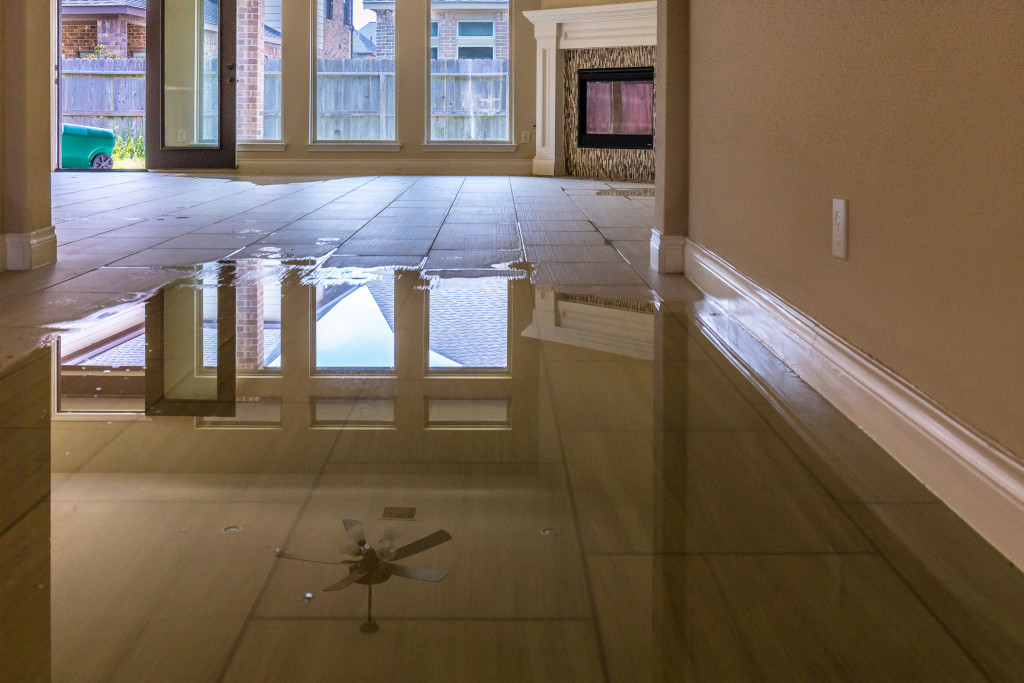It’s a nightmare when your house floods, wreak havoc, and you’re the only one in charge of fixing up the damage. Water damage involves the nasty chore of cleaning up and additional annoyances such as filing an insurance claim. Besides, it endangers the protection and value of your home.
You never know when a pipe will start leaking or when your roof will break apart after a heavy storm. During that time, you might feel overwhelmed and puzzled about how to start undoing the mess. However, if you ever find yourself in such a situation, you can save yourself the suffering.
How to Prevent Water Damage
First, you must locate and repair the origin of the water damage. The mhost typical culprits are leaking pipes, overflowing sewers, water heater spills, and flooding. You may efficiently address all of these root causes, except the flood, by contacting a skilled plumber. If there is a leak, they will aid in stopping the flow of water. Aside from that, you should take the following precautions to avoid water damage. These will help even if the trigger is a flood.
- Set up flood detection system.
- Install water sensors.
- Prevent drain blockage by regularly clearing debris.
- Frequently clean gutter and downspouts.
- Improve grading outside the house.
- Monitor home appliances such as refrigerators and washing machines for any leaks.
- Get water damage insurance for the home.
- Install flood barriers and guards.
- Keep testing hydraulic ram frequently.
- Inspect the entire house for weak spots such as broken roofs and get it fixed immediately.
- Purchase a water pressure gauge to keep the pressure off the pipes and hoses.
- Inspect the house for leaks immediately when you notice a hike in water bills.

How to Cope with Water Damage
After strictly following all the preventive measures, you might still experience water damage. These suggestions will come in handy and help make the restoration process smoother and bearable.
1. Unplug the Electronics
When there is water damage, the first thing you should do is turn off all the outlets. This is a requirement to avoid explosions and electrocution. So, even if the damage is minimal, be extra cautious with household appliances.
2. Call the Insurance Company
Water damage is not something you can mend on your own. You should phone the insurance service provider to deal with such an emergency. However, you should be informed of how the insurance company can assist you during the repair procedure. The claim adjuster might be the first person to visit your property.
By documenting the overall damage, the claim adjuster will evaluate the cost of repairs. This will assist you in lightening the restoration expense load. To expedite the procedure, you should have all records and receipts on hand.
3. Dry Everything
It’s highly advised to start drying the area within 24 hours to prevent mold and mildew growth. Start with vacating the place and renting industrial fans to dry the walls, floor, and hidden moisture. You must take out all the bulky furniture and keep them under the sunlight if possible. You may also take the help of dehumidifiers and air conditioners to remove the humidity from the place.
4. Inspect Mold and Mildew
Even after drying the area, mold and mildew may develop. Therefore, you should thoroughly check the property for the same. If you notice such a development, contact the professionals right away to start treatment. That’s because mold and mildew are dangerous to human health. You don’t want to risk your health, especially if you’re thriving alone in the region.
5. Disinfect the Property
Your property may get damaged by the water that’s contaminated. Contaminated water houses deadly bacteria, which may impact your health negatively. Contaminated water also leads to mold and mildew growth which again are harmful to you. So, disinfect the whole property to remove any traces of bacteria or germs.
6. Clean and Revive the House
Repairing a water-damaged home is rife with difficulties. Hence, you must seek professional assistance. They are outfitted with specialized equipment such as moisture detectors, hygrometers, and remote cameras. These tools aid in the restoration of papers and devices and the detection of hidden water. However, by the time they arrive, here’s what you can do.
- Discard what’s damaged and unsafe such as carpets and insulation.
- Remove the drywall, wood, and other porous materials in the house, which can’t be fixed.
- Install new windows, flooring, doorways, and what’s necessary and seal them all.
- If you decide to redo the flooring, choose the waterproof such as vinyl or ceramic over the wood.
As a homeowner, especially if you live solo, battling with water damage may be stressful. Hence, you should follow these instructions to revive your home effectively. However, if the severity of the damage is modest, try things on your own. Otherwise, contact a restoration service.

